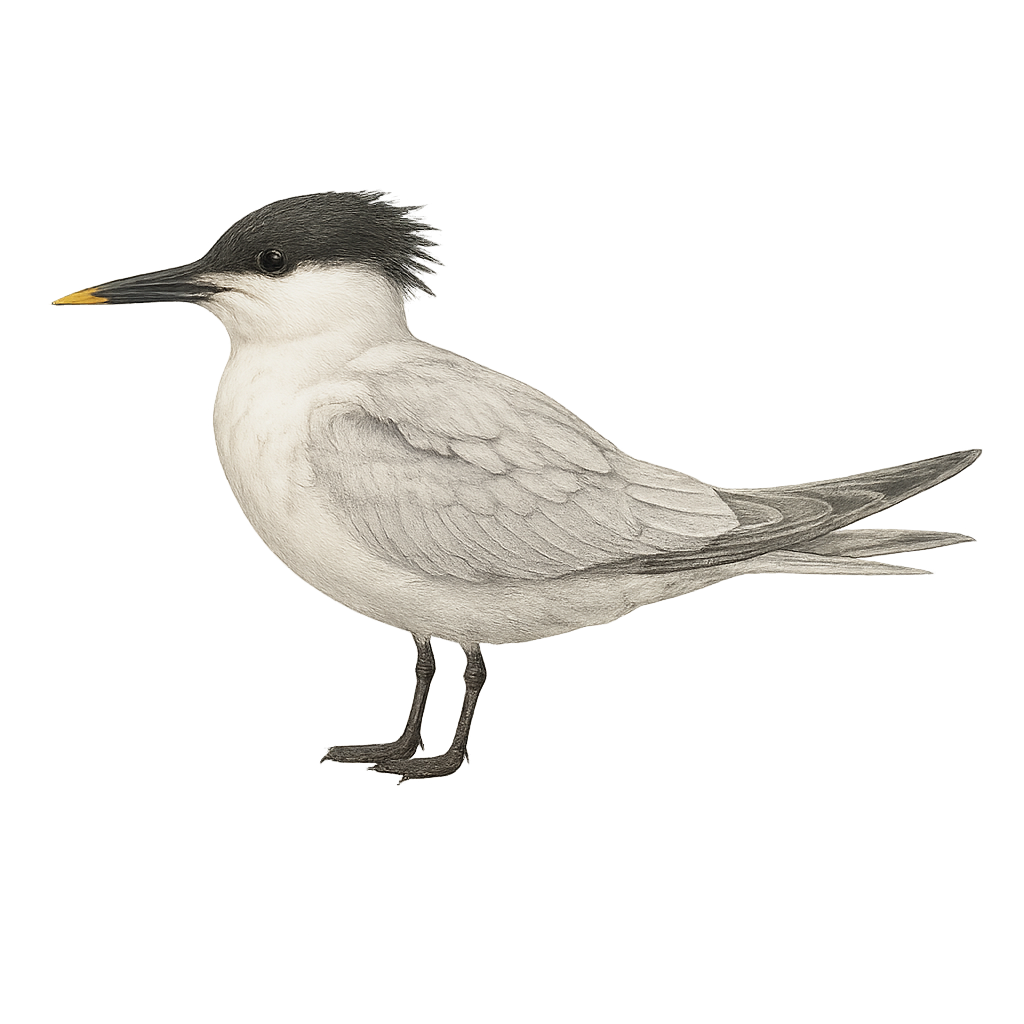Your wildlife photography guide.
Explore the sandwich tern in detail, study its behavior, prepare your shots.
Where to observe and photograph the sandwich tern in the wild
Learn where and when to spot the sandwich tern in the wild, how to identify the species based on distinctive features, and what natural environments it inhabits. The WildlifePhotographer app offers tailored photography tips that reflect the sandwich tern’s behavior, helping you capture better wildlife images. Explore the full species profile for key information including description, habitat, active periods, and approach techniques.
Sandwich Tern
Scientific name: Thalasseus sandvicensis

IUCN Status: Least Concern
Family: LARIDAE
Group: Birds
Sensitivity to human approach: Suspicious
Minimum approach distance: 10 m
Courtship display: May to June
Incubation: 22-26 jours
Hatchings: May to July
Habitat:
Beaches, islands, lagoons
Activity period :
Primarily active during the day, with peak activity in the morning and late afternoon.
Identification and description:
The Sandwich Tern, Sterna sandvicensis, is an elegant seabird known for its white plumage, black cap, and black bill with a yellow tip. It inhabits European and African coasts, nesting in colonies on beaches, islands, and lagoons. It primarily feeds on fish, which it catches by skillfully diving. As a migratory bird, it travels long distances between breeding sites and wintering grounds. The Sandwich Tern is an indicator of coastal ecosystem health, and its conservation is vital in the face of threats like pollution and human disturbance.
Recommended lens:
400 mm – adjust based on distance, desired framing (portrait or habitat), and approach conditions.
Photography tips:
To photograph the Sandwich Tern, choose the golden hours of morning or evening for soft, flattering light. Use a telephoto lens of at least 400mm to capture details without disturbing the bird. Be patient and discreet, observing from a distance to avoid disrupting their natural behavior. A tripod can be helpful to stabilize your camera, especially for long-distance shots.
The WildlifePhotographer App is coming soon!
Be the first to explore the best nature spots, track rutting seasons, log your observations, and observe more wildlife.
Already 1 439 wildlife lovers subscribed worldwide

